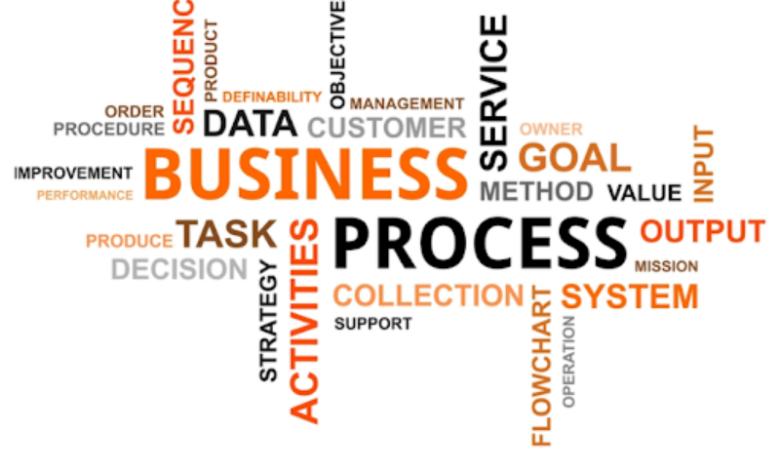Implementing Lean Principles for Business Process Optimization

In the ever-evolving business landscape, the pursuit of efficiency is paramount. Every company aims to refine its operations, minimize waste, and ultimately bolster its profitability. One approach that has gained widespread acclaim for achieving these objectives is the adoption of Lean Principles. But what exactly do Lean Principles entail, and how can they be effectively integrated into business processes to drive optimization? Let’s delve deeper into this transformative methodology.
Understanding Lean Principles
At its core, Lean methodology revolves around the fundamental principle of maximizing value while minimizing waste. Originating from the famed Toyota Production System in the 1950s, Lean has since transcended industries, revolutionizing organizational workflows across the globe. The primary objective is to establish a seamless and efficient operational framework that delivers precisely what the customer desires, precisely when they require it, with minimal resource expenditure.
Identifying and Mitigating Waste
A crucial initial step in the Lean implementation process is the identification and elimination of waste. Waste can manifest in various forms, including:
- Overproduction: Generating surplus goods beyond market demand, resulting in excess inventory and tied-up capital.
- Waiting: Idle time incurred while awaiting necessary inputs or approvals, stalling the progression of tasks.
- Transportation: Unnecessary movement of materials or products between different workstations or locations, consuming valuable time and resources.
- Overprocessing: Engaging in superfluous or redundant activities that do not contribute to the value of the final product or service.
- Inventory: Accumulating excessive inventory levels, leading to increased storage costs, and the potential for becoming outdated.
- Motion: Excessive physical movement or travel undertaken by personnel, which can be minimized through optimized layout designs.
- Defects: Defects in products or services that necessitate rework, repairs, or replacements, resulting in additional costs and delays.
- Underutilized Talent: Failing to leverage the full potential and expertise of employees, thereby squandering valuable human capital.
By meticulously pinpointing these sources of waste, organizations can embark on the journey of process refinement and efficiency enhancement.
Leveraging Value Stream Mapping
A quintessential tool in the Lean arsenal is value stream mapping. This strategic exercise involves visually charting the entire workflow—from inception to customer delivery—meticulously delineating each step and interconnection. By mapping out the value stream comprehensively, businesses gain invaluable insights into operational bottlenecks, redundancies, and areas ripe for enhancement.
Embracing Continuous Improvement
Central to the ethos of Lean is the concept of continuous improvement, encapsulated by the Japanese term “kaizen.” This philosophy advocates for the relentless pursuit of incremental enhancements in processes, regardless of their current efficiency levels. It underscores the importance of fostering a culture where every team member is empowered to identify opportunities for optimization and contribute innovative solutions.
Implementing Just-In-Time Production
Another cornerstone of Lean methodology is the adoption of just-in-time (JIT) production practices. Rather than maintaining large stockpiles of inventory, JIT entails synchronizing production with actual customer demand, ensuring that goods are produced precisely when needed. This approach minimizes inventory holding costs, reduces the risk of overproduction, and enhances responsiveness to market fluctuations.
Empowering the Workforce
Fundamental to the successful implementation of Lean Principles is the empowerment of employees at all organizational echelons. Recognizing that frontline workers possess invaluable insights into operational intricacies, Lean encourages active participation and collaboration in problem-solving endeavors. By entrusting employees with the autonomy to propose and implement process improvements, organizations tap into a wellspring of creativity and ingenuity.
Initiating Lean Transformation
Embarking on a Lean journey necessitates a concerted organizational effort and strategic planning. To kickstart the process:
- Secure Organizational Buy-In: Garner support and commitment from leadership and stakeholders across the organization, elucidating the tangible benefits of Lean implementation.
- Cultivate a Culture of Learning: Provide comprehensive training and development initiatives to equip employees with the requisite Lean knowledge and methodologies.
- Commence Incrementally: Begin with targeted pilot projects or focus areas, gradually expanding the scope as successes accrue and confidence grows.
- Establish Performance Metrics: Define clear performance metrics and key performance indicators (KPIs) to gauge progress and ascertain the efficacy of Lean initiatives.
- Celebrate Milestones: Acknowledge and celebrate achievements and milestones attained throughout the Lean journey, fostering a sense of collective accomplishment and motivation.
Conclusion
In conclusion, the integration of Lean Principles represents a transformative paradigm shift for organizations aspiring to optimize their business processes and fortify their competitive standing. By meticulously identifying and mitigating sources of waste, leveraging value stream mapping, embracing continuous improvement, implementing JIT production, and empowering the workforce, businesses can embark on a trajectory of sustained operational excellence and customer-centricity. As the business landscape continues to evolve, the adoption of Lean Principles emerges as an indispensable catalyst for driving efficiency, innovation, and enduring success. So, seize the opportunity to embark on your Lean journey today, and unlock the full potential of your organization’s operational prowess.



